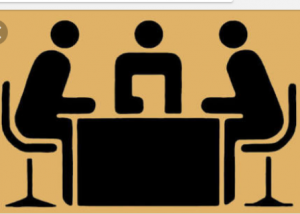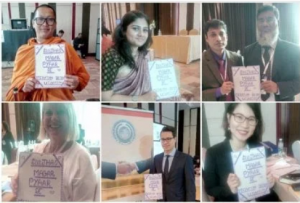From Litigation to Mediation
While the long and drawn-out litigation process pits the parties against one another with the lawyers taking adversarial positions based solely on what has already occurred, mediation is a more collaborative process.
 Given the backlog of more than 3.2 crore court cases and the fact that each case on an average requires 3 to 4 years to reach its conclusion, experts say that there is a colossal need to shift to Alternative Dispute Resolution (ADR) methods such as mediation. “If a person is involved in a legal battle of Re.1, he has to invest 37 paise more to get that Re.1,” said Kritika Krishnamurthy, Professional Mediator and Partner, AK and Associates while bringing forth the expense a person incurs on litigation.
Given the backlog of more than 3.2 crore court cases and the fact that each case on an average requires 3 to 4 years to reach its conclusion, experts say that there is a colossal need to shift to Alternative Dispute Resolution (ADR) methods such as mediation. “If a person is involved in a legal battle of Re.1, he has to invest 37 paise more to get that Re.1,” said Kritika Krishnamurthy, Professional Mediator and Partner, AK and Associates while bringing forth the expense a person incurs on litigation.
Litigation, which was introduced to us by the colonial government, settles the dispute whereas mediation, which has existed in this country from time immemorial, resolves the dispute. Resorting to litigation requires that each side hire their own lawyer, and the courts have specific rules and procedures that must be followed before the case gets before a judge or jury, often resulting in long delays and significant legal fees.
“Many lawsuits are not resolved for years after they are initiated. The mediation process, on the other hand, is much less formal than a lawsuit, with direct participation and discussion by the parties involved.”
There are fewer procedures and requirements, and more flexibility. It is less time-consuming as well as less money draining. This, in turn, means less stress for all those involved.
Also read: Artificial intelligence: The solution to reducing backlogs in Indian Courts?
Tech mediation start-up ODRways in collaboration with West Bengal National University of Juridical Sciences, Kolkata (WBNUJS) organised a pan-India mediation awareness event.
As part of the event, four business-mediation summits were held in four metros which subsequently concluded in Delhi recently.
 The objective of the Indian Mediation Week (IMW) which is annually celebrated in September is to raise awareness, knowledge and use of mediation across different parts of India through its chain of events across the year. WBNUJS aims at bringing together all the major stakeholders of the mediation community on a common platform while highlighting the benefits of the process to the general public. According to them, it is the “beginning of a journey of taking India back to its original method of dispute resolution, #suljhaomagarpyaarse.
The objective of the Indian Mediation Week (IMW) which is annually celebrated in September is to raise awareness, knowledge and use of mediation across different parts of India through its chain of events across the year. WBNUJS aims at bringing together all the major stakeholders of the mediation community on a common platform while highlighting the benefits of the process to the general public. According to them, it is the “beginning of a journey of taking India back to its original method of dispute resolution, #suljhaomagarpyaarse.
On ‘Ease of doing business’, Gopal Agarwal, National Economic Spokesperson, BJP and Independent Director, Bank of Baroda, highlighted the fact that “India jumped 23 ranks to reach 77” in ‘World Bank’s Ease of Doing Business Index 2019’. Talking further about the NDA Government’s achievement, he brought to the fore the journey of Indian economy from fragile five to world’s favoured investment destination.
The event also witnessed two panel discussions on “How to make doing business easier” and how to solve disputes quicker.
The panel first discussed about the need for single window system in India to promote the interests of the entrepreneurs. Note that the system entails increasing the efficiency through time and cost savings for traders in their dealings with government authorities for obtaining the relevant clearance and permit(s) for moving cargoes across national or economic borders. The system, as the panel discussed would shift the burden from entrepreneurs to bureaucrats thus making the start-up environment favourable.
Also read: Media Gag: A Judicial Hindrance?
Moving forward and talking about the failure rate of start-ups in India and comparing the situation to USA, Eric Azulau stated that he was not surprised by the rate and that they are approximately same in USA. Adding to it, Kanishk, Partner, Shardul Amarchand Mangaldas, a law firm, stated that there is no legal reason for such a failure rate.
“In the other panel, Pranjal Sinha, Chief Coordinator, IMW talked about the dire need of shift from adversarial legal system to collaborative legal system.”
The panel highlighted the fact that a person needs to decide oneself whether he/she wants to resolve the dispute or settle the same. The will of the affected person is of prime importance.
 The panel also shed light on the ordinance amending the Commercial Courts Act that inserted Sec 12A to the act. It entails that where a suit does not contemplate urgent interim relief, the plaintiff has to undergo pre-institution mediation. As Krishnamurthy rightly said, it is just an incarnation of Italy’s opt-out model in mediation which pertains to compulsory pre-litigation mediation.
The panel also shed light on the ordinance amending the Commercial Courts Act that inserted Sec 12A to the act. It entails that where a suit does not contemplate urgent interim relief, the plaintiff has to undergo pre-institution mediation. As Krishnamurthy rightly said, it is just an incarnation of Italy’s opt-out model in mediation which pertains to compulsory pre-litigation mediation.
Discussing about whether the amendment is a positive change in the Indian legal system, the panel concluded that it is indeed a welcome step by the legislature. Citing an example about how mediation helps in saving relationships, Ravi Singhania, Partner, Singhania and Partners, talked about two partners in a business who were not ready to see each other at the starting of the mediation to hugging each other at the end of it.
While the long and drawn-out litigation process pits the parties against one another with the lawyers taking adversarial positions based solely on what has already occurred, mediation is a more collaborative process. As a result, mediation can help save relationships that might be destroyed in litigation. One more advantage of mediation over litigation is that a person not satisfied by the result does not have to accept or work towards fulfilling it. One always has the option of moving to the court in case of non-satisfaction.
The event was supported by Ministry of Law and Justice, Government of India, Indian Institute of Corporate Affairs (IICA) and Supreme Court Mediation and Conciliation Project Committee (MCPC).
